“What a wonderful World”
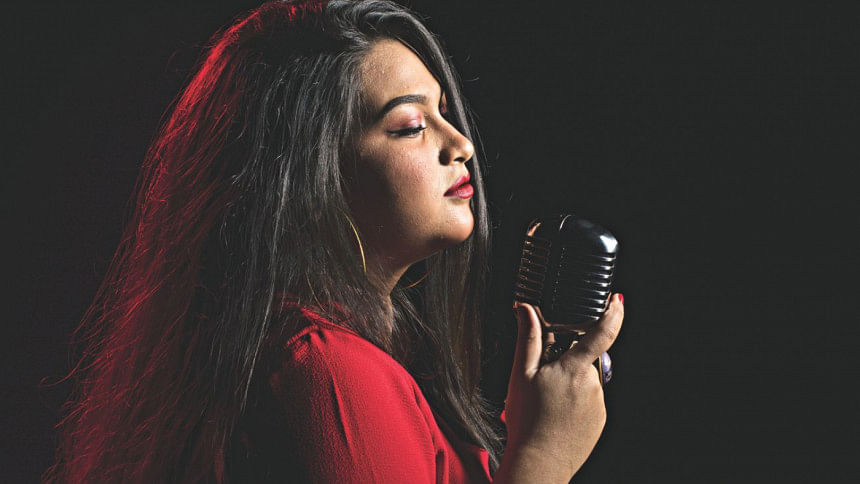
JAZZ, YOU SAY?
It would not be an understatement that Jazz, as a musical genre, defies all definitions. While it is not difficult to understand the musical theory, if one wishes to embark on a study, it is not at all important to understand improvisation, syncopation, rhythm, blue notes, melody and harmony — musical jargons used to describe the signatures of jazz.
Swing, bebop…fusion, these are only a few of the variations of this music, and to understand them the 'you-know-it-when-you-hear-it' has been the tested approach; perhaps the best approach. As the great Louis Armstrong once said, “If you have to ask what jazz is, you'll never know.”
The first experience with jazz is often disorienting, specially to ears deafened by pop. In jazz, multiple melodies and rhythms work and those seeking a predictable format in the tune will simply not find any! But like most other great things in life, jazz, is an acquired taste and the very same attributes that make it difficult to appreciate at first, are what more seasoned listeners come to relish.
THE ELEMENTS
Musicians, critics, and listeners agree — improvisation is at the heart of jazz. Although we often associate it with a quartet; a saxophone or a bass guitar, the ensembles can and do range in style, size and instrumentation. Yet, three elements are set to bind all jazz music: Syncopation, blue notes, and their improvisations.
It takes time to understand and appreciate these elements, but possibly it is the improvisation that appeals most to listeners.
Jazz music works best as a group, and especially one where all members are so familiarised with one another that they are not only able to follow, but also provide support to create interesting pieces within a piece; one that may never be played again! Jazz, as many consider, is a musical extempore.
Improvisation allows for a kind of communication between players known as a 'call-and-response pattern.' This is a common element in African-American music. It starts when a soloist, singing or playing, who issues a 'call' and the other participants sing or play back a 'response.’
Syncopation refers to shifting the emphasis of a song's rhythm, or beat pattern, to weak or unaccented beats and notes. It appears in jazz when two rhythms are played against each other. This gives the music its characteristic 'swing,' the feeling that makes listeners want to tap their feet, or dance.
Blue notes, are a little more difficult to explain and understand. It occurs when a musician plays or slides through a scale, flattening some of the notes playing them a half-step lower than expected. These are what jazz musicians refer to as the dissonant 'bent' notes, also a hallmark of the blues, jazz's half-brother, also of African American origin.
JAZZ FEVER
No matter how surprising it may seem, there is method in every jazz piece; the improvisations as stormy as they may seem, follow patterns for the listener to decipher.
Jazz performances have segments; yet, there is no segregation, each blending with the other; the audience must keep the elements in mind, because the forms of jazz can be, and will be bent, but hardly ever broken — there is order in mayhem, so to speak.
Often, in between taking turns doing solos, a jazz ensemble will return to a familiar part of the song, usually a chorus. Once identified, the listener can then pick the variations and truly acknowledge the skills and the creativity of the musicians.
And with time, as one gets more and more familiarised, jazz becomes a more palatable, acquired taste.
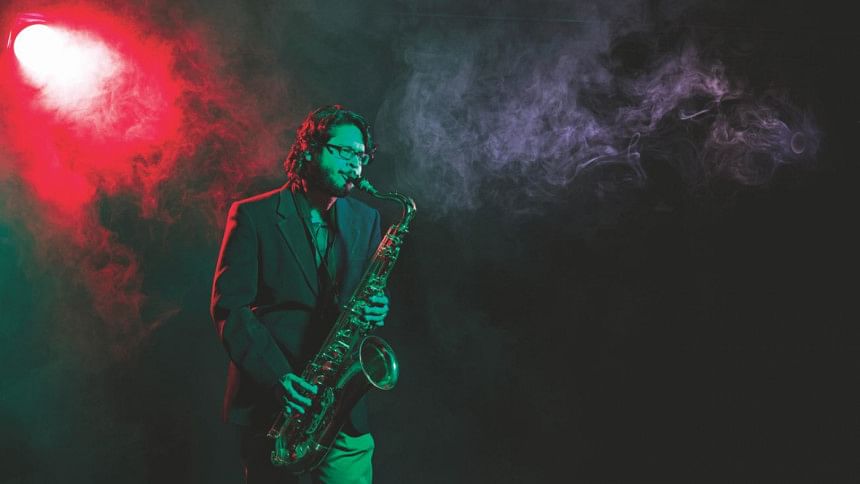
A WALK DOWN THE ANNALS OF HISTORY…
…because it's important
Jazz, as we know it, is said to have its origin in twentieth-century New Orleans. That however is a very long story cut short. It can be said, that it is in New Orleans that jazz found its identity in the aftermath of the American Civil War. As the decades followed, the music became popular in America and with technological advancement like recording and radio, jazz became a part of mainstream African-American music, and slowly within mainstream America.
It has been a longstanding misrepresentation of history that African slaves who were abducted to various regions of the world, including the Americas, were socially, morally, and culturally inferior.
The African peoples who came to America through the trans-Atlantic slave trade came largely from West Africa and the greater Congo River Basin, and brought their traditions with them, some seeped in thousands of years of splendour as a race.
By the time the Civil Rights Act of 1866 was passed to define citizenship and affirm that all citizens are equally protected by US law, the slave trade had brought nearly 400,000 Africans to North America.
Initially, the African slaves would sing of their glorious past, or as they work, would indulge in 'call-and-responses' where a leader would start and the others reply to what was said. This concept of 'call and response' became the heart of jazz music, many centuries later.
The white captors soon realised that these songs in a foreign tongue actually made the workers calm, and at one point, not only did they promote it, they made it mandatory to sing while the slaves worked.
Songs were also sung at the end of a hard day's labour, but the nature varied.
In early African-American music, drums were used to provide rhythm but those were banned in later years because of the fear that Africans would use them to communicate in a rebellion.

Scholars however often question the factual ground of this fact of banning. Be that as it may, necessity made way for innovation and Africans managed to generate percussion and percussive sounds, using other instruments, or their own bodies.
Strange as it may seem, the work songs were primarily sung while working at cotton plantations, the most common subject in the lyrics were corn, the main component of their diet. The songs reflected the pathos of their lives, a blend of a glorious past, a despicable present, and what may have seemed to them — an endless tunnel.
Another pivotal moment in American musical history is when the slaves, the majority of them Muslims or adhering to tribal religion of Africa, were forced to convert to Christianity.
The spiritual aspect of Afro-American slave songs took new forms.
These spirituals were religious folk songs to express the desire for freedom and their devotion to their new found faith. This would continue without much appreciation or acknowledgement by historians until 1865, when slavery was formally abolished.
Although the plight of the Afro-Americans was still an ever present reality, for the first time they had the power to join the mainstream, even if in a segregated society, and culture and tradition took unprecedented twists and turns.
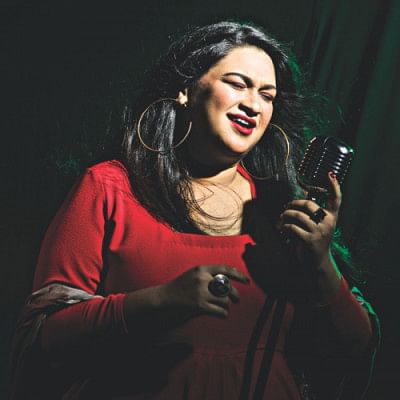
CONGO SQUARE, NEW ORLEANS
The two types of African-American musical traditions that were paramount in the development of jazz are the spirituals and the work songs. In fact, it can be said with authority that the earlier slave populations were the first jazz musicians.
The music remained vivid in collective memory, and as it was handed down from one generation to another, the music evolved, and the pivotal moment in Afro-American music was in fact the Emancipation Proclamation.
The exodus of people from Hispaniola fearing the Haitian Revolution made a remarkable contribution; as did the migrant Europeans — Scottish, English, Irish, French, Spanish and Italians, each etching a mark on the jazz scene of New Orleans, the place now recognised as the birthplace of the genre.
In the early 1800s, slaves gathered in Congo Square, New Orleans to perform their traditional music and dances. As the traditions of other migrant population were amalgamated, the music that was till then purely of African origin, got a flavour of America and jazz performances started using string instruments and improvised percussions where multiple rhythms played simultaneously.
Over time, this give and take became more elaborate and free. Work songs or spirituals, was more rhythmic; European music that amalgamated with it was more focused on melody and harmony.
At New Orleans, African music was Europeanised, and the European style of music embraced the African traditions with open arms. This continued well into the 20th century and continues today as jazz is played around the world.
Congo Square, possibly named after the Congo river, the native land of most African slaves, and the dances that were performed there, had a lasting influence on spirituals, the blues, Creole music, brass band, even post 19th century European classical music.
THE JAZZ AGE
From 1920 to 1933, Prohibition in the United States resulted in illicit 'speakeasies' which became lively venues of 'the Jazz Age,' hosting popular music including current dance songs, novelty songs, and show tunes.
As jazz begun to be associated with alcohol and what was perceived to be other social maladies, it began to get a reputation of being immoral, and the older generations saw it as a threat to their old cultural values.
To them, jazz was synonymous to the new 'decadent values' of the Roaring Twenties, and soon even radios and the media too began to denigrate jazz.
Jazz became an American phenomenon and broke the racial barriers through the radio, and thanks to the advancements of the recording technology. Yet, it was the live performance that moulded what we now consider jazz.
Typically led by a trumpet or cornet — supported harmonically by reeds and other horn instruments, and rhythmically by bass and drums — the emphasis in New Orleans jazz was on collective, melodic improvisation.
The signature solos, that is now at the heart of the music, were virtually non-existent.
As more and more people flocked to New Orleans the friction along racial lines became more visible, and at a point the scene became socially oppressive to the point that lack of opportunities to flourish as musicians became a reality, and a great number of musicians moved to Chicago to experiment with 'their' version of music.
And the Jazz world changed forever!
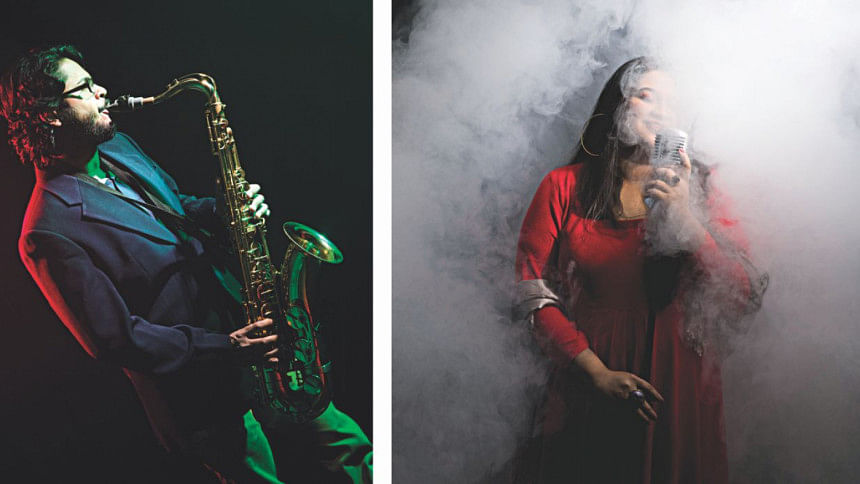
IN CHICAGO
Dixieland, although closely related to New Orleans jazz, made use of collective, melodic improvisation and allowed, even focused for solos and incorporated the piano.
The trauma of the two World Wars left scars in the psyche of the Western nations, and the world changed forever because of it.
After World War I ended, people across the world, and not only America, wanted a fresh start and to see an end of tired social customs. And perhaps it was during these times, for the first time, African-American culture became a hot commodity, which did much to elevate the position of community in mainstream American society.
At the musical level, Chicago jazz, absorbed ragtime, a new style of piano playing that developed towards the end of the 19th century.
In the early days, jazz and dancing were inextricably tied to each other. And that was also one reason for many to consider this as unwholesome and lower-class.
Although more than half a century had passed since the abolition of slavery, Afro-American heritage was degraded largely because of its racial connections; but not everyone was opposed and white musicians, eager to learn the new genre, began to seek out black musicians, and jazz started to explode.
THE LAST NOTES
Jazz has always been about freedom, movement and individual expression. Perhaps, that is why the innovation that serves as its backdrop influences cultures today, and not necessarily restricted to the American. Jazz is played, with its own local flair, on every continent.
During Prohibition and the economic prosperity of the 1920s, it became the soundtrack in underground speakeasies, where pleasure ruled and outlawed liquor was heavily consumed.
F Scott Fitzgerald captured the essence of the era in 'The Great Gatsby' — the story of a high-profile bootlegger, his lavish parties, and the frivolity of the characters surrounding him.
In Harlem, New York, the music became the part of a cultural renaissance among African-American writers and artists of all kinds and its effect was an everlasting one, even on a global scale.
As for Jazz, it was the swing (1935-1945) that marked a paradigm shift in jazz — from improvisation to notated music, and larger ensembles known as 'big bands.' Because of the size of the ensembles – made up of several horns, reed instruments and percussion – swing required simplified written arrangements.
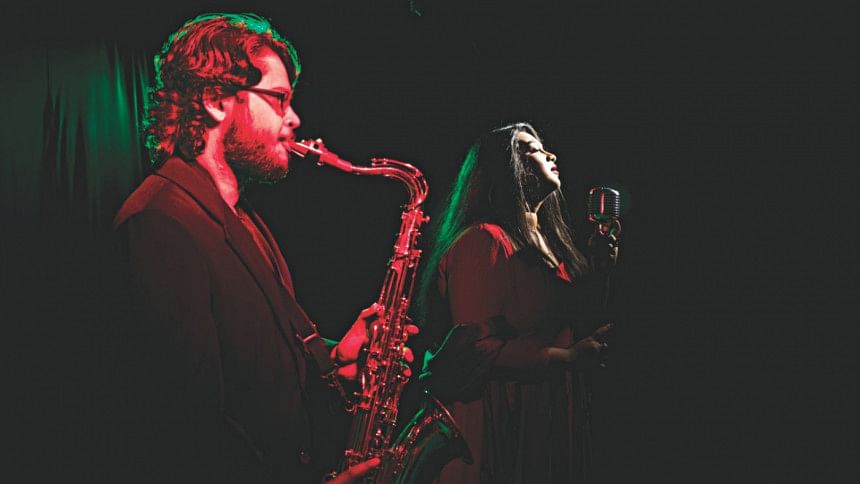
It was repetitious, and pop friendly than other previous forms of jazz.
Bop, or 'bebop', that developed in the post-swing era (c. 1945), shunned the pop-accessibility of its forebear. In bop, the spotlight was on the soloist. The new style was criticised for lacking melody, but today, this is what jazz is most widely associated with.
Faster, abstract and certainly not a dance music, bop pushed jazz for the first time into art status and out of low culture. The bebop era made way for what musicians now coin as 'cool jazz,' also known as West Coast jazz, which marked a return to arrangements and retained elements of swing.
Today, the deviants of jazz are plentiful; yet, those who seek it from a puritan perspective still find active musicians carrying on the legacy in its truest form.
Yet, in its myriad deviant forms, it is considered a precursor to even rock music. As rock became complex and musicians more skilled, players from both camps began to collaborate further, just as the predecessors of jazz had done. Unfortunately, this hybridisation that has now crystallised into a new form of music, is still not acknowledged by jazz purists.
The story of jazz is not an ancient one, but the tale of the people who contributed to the genesis, and development of this genre, is.
Scholars often attribute the point of its creation to the transatlantic slave-trade. Jazz was the way of these people, enslaved in an estranged land, working in the fields and plantations of the American south, where the seeds of some of the greatest forms of music had their beginnings. And jazz is the one that stands apart as no other genre has absorbed so many traditions, or has inspired so many others.
Photo: Sazzad Ibne Sayed
Model: Tashfia Sui Tashfee, Rahin Haider
#1
Nothing felt worse than the frequent bouts of homesickness that engulfed us all in the first months of grad school. At first the remedies seemed to work great — partying on the weekends, cooking khichuri and begun bhaja, or just talking about missing home. But it was only for a while; eventually talking about the same things over and over again seemed pointless.
Misery loved company and we were a gang of five homesick adults.
On one random Friday night out we discovered a bar. It was underground; until that point neither one of us were familiarised to the term 'speakeasy.'
You would have to take the stairs to an underground little bar. The lighting in the space was perfect — neither murky nor dim, which could give you dodgy vibes, or too bright, like the usual clubs that could lead to potential seizures, or migraines that we had often suffered earlier.
The speakeasy was cosy and comfortable with fairy lights strung around the ceilings. People were huddled at tables, busy talking and drinking while the musicians on the little stage were busy setting up their instruments. As one of us made their way to the bar to grab a menu, we looked for an empty table.
Our friend was back with the menu and as we ordered our drinks, the musicians started to play.
It was Jazz!
This was probably the first time in my life that I was properly listening to jazz, and that too live. As the musicians got into their groove, so did the people. Romance was in the air. People were laughing, talking, bobbing their heads, or swaying their bodies to the music.
For the first time since we had arrived to this strange land, we felt at ease. The music was romantic, happy, nothing crazy that made your blood rush. It was comfortable. As the pace of the rhythm picked up and fell, so would the excitement in the air.
The music had me amazed. I don't think I'll ever be able to put a finger on what it was precisely, but jazz definitely played a role in it.
— Supriti Sarkar
#2
Before I was into jazz, but listened to a lot of other music, I realised that most songs are way more interesting when the musicians didn't play verses or choruses the same way every time. Different phrasings or rhythms or fills peppered throughout a song, even if the overall structure is the normal verse/chorus/verse/bridge/etc. makes me way more likely to go back to a song.
There are exceptions to this rule but that's a different discussion. I would argue that even the best repetitive songs could be better with a bit more improvised flair.
Jazz is the embodiment of this concept on speed. Nothing is ever played the same way, the players are listening and responding to each other in real time, even the lower-level players are ultra-competent. There's something worth listening to in every piece.
It's astounding that everything in a piece can work so well as a whole without every moment being planned out and then when you focus on a particular instrument, it can blow your mind even when it's just hanging in the background and chilling.
Sure you can find this in other styles sometimes but with decent jazz that's just how it works, it's expected. And the modular makeup of the whole scene, different combinations of players playing the same songs to wildly different effect, swap out one musician for another and everything changes.
In the case of Jazz, I appreciate the balance of structure and freedom, particularly in smaller ensembles. Apart from the form and basic changes/melody of a tune, musicians are free to interpret as they please, especially when it comes to solos.
There's a bittersweet beauty in the knowledge that no two performances of a tune will be quite the same, though I suppose that's also true of other genres to a lesser extent.
I guess that's jazz so endlessly fascinating.
— Ahmad G Fakhruddin
We would like to thank Mahbub Farid for helping us in the research for this article.

 For all latest news, follow The Daily Star's Google News channel.
For all latest news, follow The Daily Star's Google News channel. 



Comments